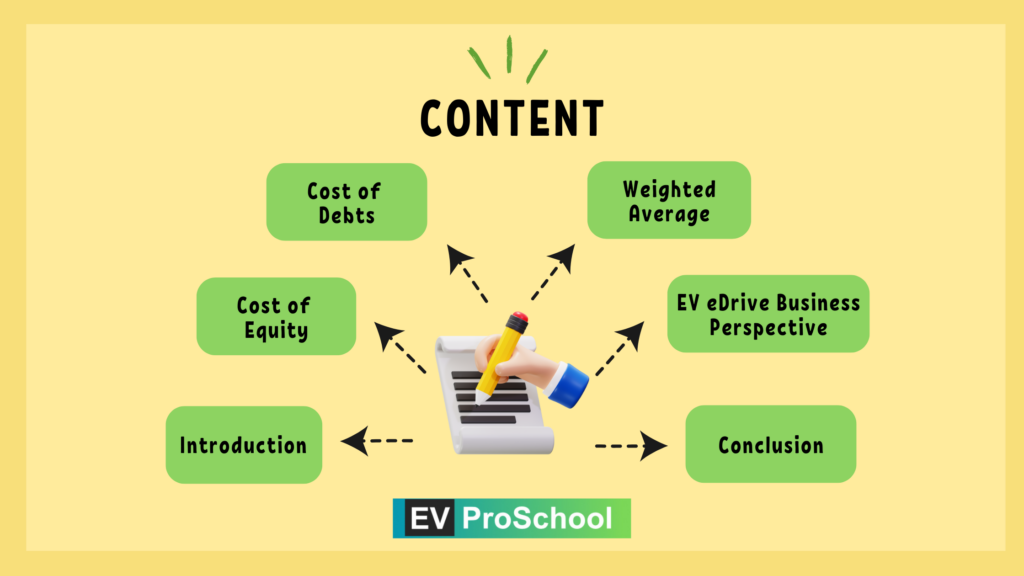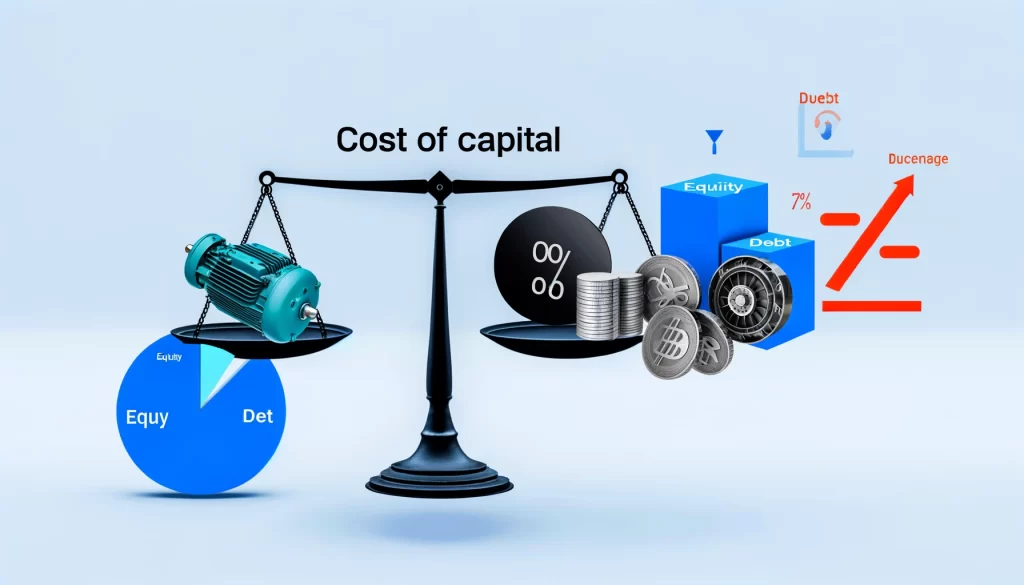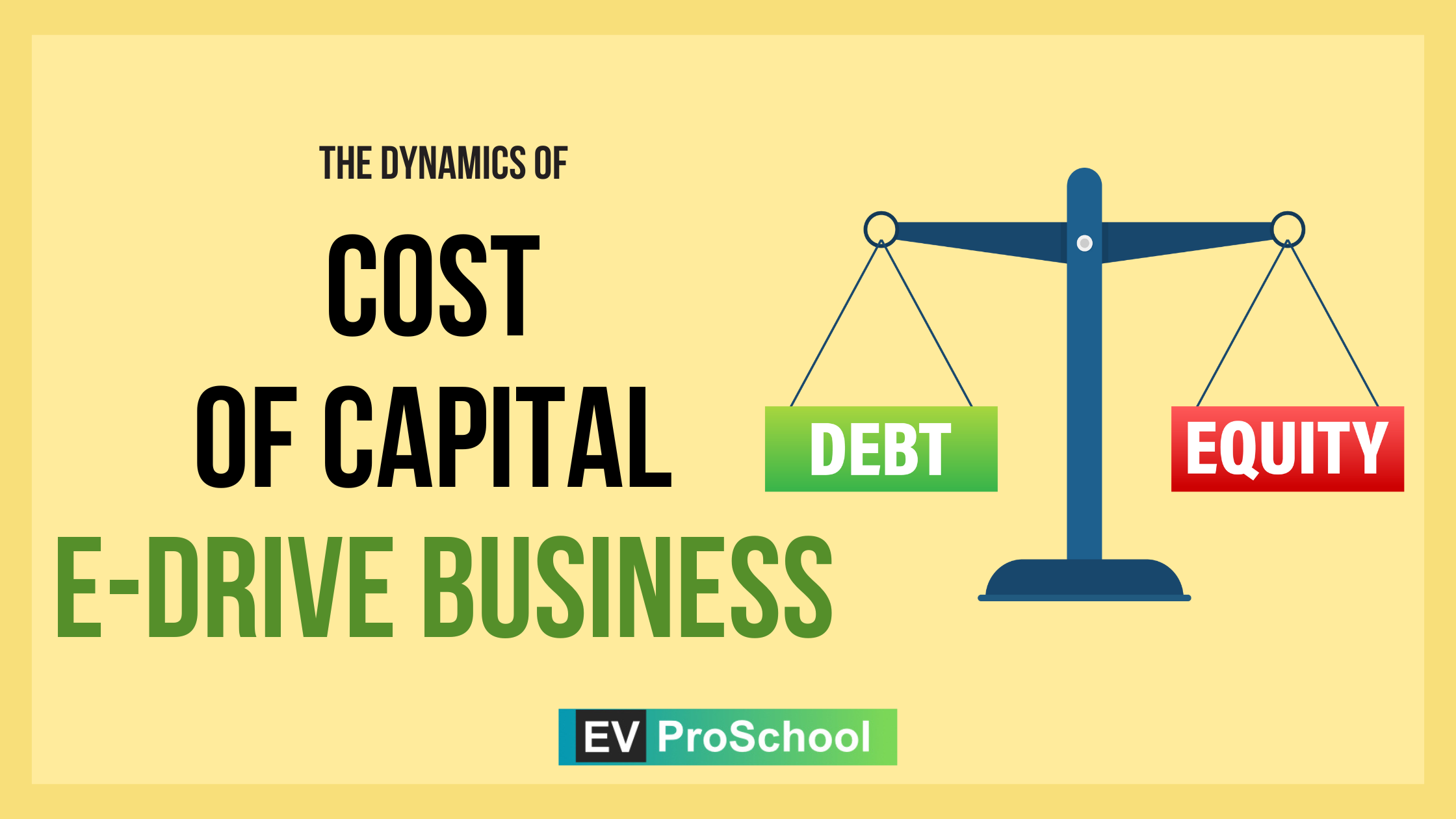In the rapidly evolving electric vehicle (EV) sector, understanding the cost of capital is crucial for businesses focused on electric drive systems (eDrives). The cost of capital encompasses the cost of debt and equity, reflecting the expense a company incurs to finance its operations and growth. For EV eDrive businesses, navigating these costs effectively is key to driving innovation and maintaining a competitive edge.

Understanding the Cost of Capital
1. Cost of Equity:
The cost of equity represents the return that investors expect from their investment in the company. It’s a crucial metric for eDrive businesses seeking equity financing to fund research, development, or expansion. Calculating the cost of equity involves assessing the risk associated with investing in the company and the expected rate of return, which can be influenced by market volatility and the company’s performance prospects.
2. Cost of Debt:
Unlike equity, debt involves borrowing funds that must be repaid along with interest. The cost of debt is relatively straightforward to calculate, as it’s the interest rate paid on the borrowed funds. However, since interest expenses are tax-deductible, the after-tax cost of debt is considered in the overall cost of capital. For an EV eDrive business, debt financing might be used for purchasing equipment, expanding production capacity, or scaling operations.
3. Weighted Average Cost of Capital (WACC):
WACC provides a comprehensive view of a company’s cost of capital across all sources, weighted by their proportion in the company’s capital structure. It’s a critical measure for eDrive businesses, as it affects investment decisions, valuation, and the assessment of new projects’ feasibility. A lower WACC indicates a lower risk and cost of financing, making investments more attractive.
The EV eDrive Business Perspective
For businesses in the EV eDrive sector, balancing the cost of equity and debt is paramount. Equity financing, while not imposing mandatory repayments like debt, requires giving up a portion of ownership, which could be expensive if the company’s value appreciates significantly. Debt financing, on the other hand, offers tax advantages but increases financial risk due to the obligation to meet interest payments regardless of the business’s performance.
Explore More : Dividend Valuation Method & Cost of Equity: Need EV Growth

Consider the hypothetical example of “ElectroDrive Innovations,” an emerging player in the EV eDrive market. If ElectroDrive decides to issue new equity to fund its expansion, it faces the challenge of setting a price that aligns with investor expectations without diluting existing shareholders’ value excessively. Alternatively, if it opts for debt financing to maintain ownership control, it must ensure that the cost of debt does not exceed its operational cash flow capabilities, risking financial distress.
Conclusion
The cost of capital is a vital consideration for EV eDrive businesses navigating the complex landscape of financing options. By understanding and optimizing their cost of equity and debt, these companies can make strategic decisions that support sustainable growth and innovation. As the EV market continues to expand, the ability to efficiently manage financing costs will be a key determinant of success for eDrive technology developers.



